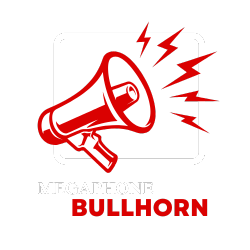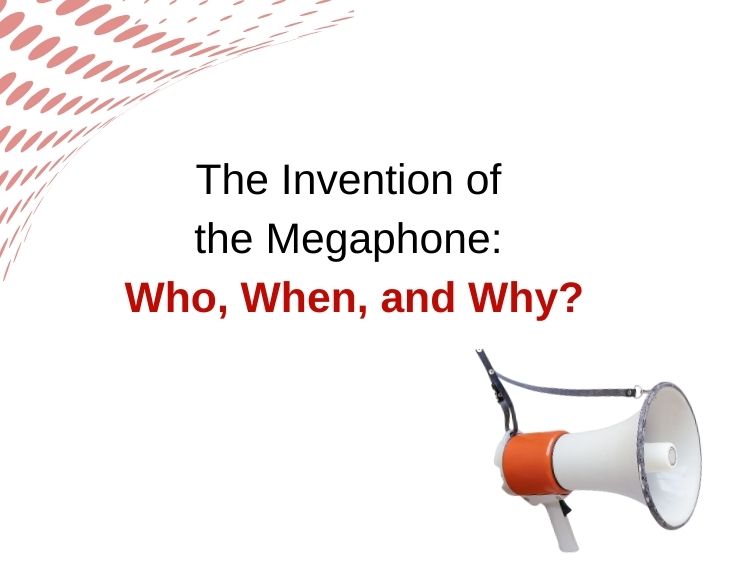Megaphone is a device designed to amplify and direct the human voice. It has an interesting history rooted to the human needs for effective communication over long distances. The invention of the bullhorn had contributions from multiple scholars and evolved over centuries. This blog gives you information about who invented the megaphone, when it was developed, and the endurance behind its creation.
Early Concepts of Sound Amplification
The initial idea of amplifying sound predates the formal invention of the megaphone. As we look back at ancient times, we notice that the natural acoustics played a great role in public communication. Many civilizations such as the Greeks and Romans used architectural designs like amphitheaters to enhance vocal projection, allowing the leaders or speakers to address large audiences without physical aids.
The main forms of sound amplification also started being used in the military. Commanders used hollowed-out horns or conical devices to give orders across battlefields and ships.
The First Documented Megaphone
The first human to experiment with and document a mechanical method of sound amplification was Athanasius Kircher, a German Jesuit scholar. In 1650, Kircher published his work on “speaking tubes” and other devices designed to transmit sound over long distances. His experiments with conical structures proved how sound waves could be concentrated and projected more efficiently.
Kircher’s designs had a large horn-shaped device that could amplify speech. These creations were particularly useful in areas where clear communication was difficult. Although Kircher’s bullhorns were not widely adopted at that time, his work represented a significant leap forward in the understanding of acoustics and mechanical amplification.
The Speaking Trumpet
In the 17th century, Sir Samuel Morland, an English inventor and mathematician, further modified the invention of the bullhorn. In 1671, Morland presented an instrument called the “speaking trumpet” to the Royal Society. This device, made of copper or brass, could project the human voice up to a mile away under favorable conditions.
Morland’s speaking trumpet was especially beneficial for marine people’s communication, where the ability to convey messages across large distances overseas was challenging. Naval officers and ship captains quickly adopted the device to facilitate communication among vessels. Morland’s contribution was instrumental in transforming the bullhorn from an experimental curiosity to a practical communication tool.
Thomas Edison and the Modern Megaphone
While Kircher and Morland started the foundation, the modern bullhorn owes much of its development to Thomas Edison. In the 1870s, Edison remodified the megaphone’s design for use in public speaking and theatrical performances. His improvisations included a more efficient conical shape that produced better sound projection without depending on electrical power.
Edison’s bullhorn was groundbreaking because it allowed speakers to address large audiences without straining their voices. This innovation proved priceless for public gatherings, entertainment venues, and political protests. The portability and simplicity of Edison’s design made it a necessary communication tool in the late 19th century.
Why Was the Megaphone Invented?
The invention of the megaphone was further preceded by the practical need to overcome the limitations of the human voice. In environments where background noise or physical distance posed challenges, bullhorns provided a simple yet effective solution for amplifying speech. Several key motivations fueled the development of the megaphone:
- Military Communication: On battlefields and aboard ships, clear communication was essential for coordinating movements and issuing orders. Bullhorns enabled commanders to project their voices over noise and across long distances.
- Public Speaking: As societies grew and public gatherings became larger, orators needed tools to ensure their messages reached everyone in attendance. Bullhorns provided an affordable and practical means to amplify speech.
- Entertainment: The rise of theater and public performances created a demand for devices that could carry an actor’s voice to audiences seated far from the stage. Bullhorns allowed performers to be heard without compromising vocal clarity.
- Emergency Communication: In situations where rapid dissemination of information was critical, such as during fires or disasters, bullhorns allowed officials to deliver instructions clearly and efficiently.
The Evolution of Megaphones Over Time
The invention of the bullhorn, in the mid-20th century marked a new chapter in the megaphone’s history. The development integrated electrical components to amplify sound. Powered bullhorns became vital for emergency services, public demonstrations, and large-scale events.
Modern bullhorns continue to evolve with advancements in digital technology. Wireless bullhorns with voice recognition capabilities and integration with public address systems reflect ongoing innovation in this field. Instead of these technological enhancements, the core function of the megaphone remains the same i.e to project and amplify the human voice.
Cultural Significance of the Megaphone
Beyond its practical applications, the bullhorn holds symbolic meaning in contemporary culture. It represents authority, protest, and the power of amplified voices. Images of activists using megaphones at rallies and demonstrations underscore its association with free speech and social movements.
In popular culture, bullhorns often appear as equipment of leadership and command. From sports events to political campaigns, the megaphone continues to highlight the importance of clear and effective communication. For effective communication choose your megaphones cleverly. You can consider the latest models of Pyle, MyMealivos, 5 Core and Thunder Power for meat models.
Conclusion
The invention of the megaphone is a testament to humanity’s desire to improve the limitations of natural speech. Contributions from Athanasius Kircher, Samuel Morland, and Thomas Edison collectively contributed towards creating the megaphone into a versatile communication tool. Initially developed to address specific challenges in military, maritime, and public speaking contexts, the megaphone has evolved into a symbol of amplified voices and collective action.




